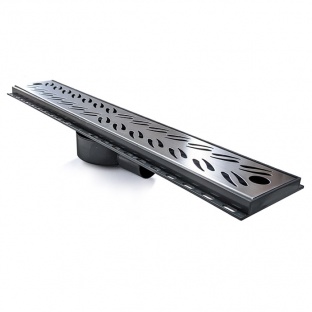| ||||||||||||||
Innovations in Drainage Channels: What's New in the Industry for Your Property19 February 2024 | Admin
The world of drainage channel technology is undergoing a remarkable transformation, driven by advancements in materials, design, and digital technology. This evolving landscape represents a significant shift from traditional methods, introducing more efficient, sustainable, and intelligent drainage solutions. For property owners and professionals in the plumbing and construction industries, keeping pace with these innovations is not just about staying current; it's about leveraging new opportunities to enhance property value, ensure compliance with environmental standards, and address water management challenges more effectively. The importance of these advancements extends beyond mere functional improvements. They embody a broader commitment to environmental stewardship, sustainability, and adapting to the changing demands of urban development. As we explore what's new in drainage channel technology, property owners and industry professionals will discover innovative ways to manage water runoff, prevent flooding, and contribute positively to the environment. The Evolution of Drainage ChannelsDrainage channels have come a long way from their rudimentary origins. Historically, drainage systems were primarily designed for functionality, focusing on basic water diversion and disposal without much regard for environmental impact or efficiency. Early drainage solutions were often simple, open channels made from readily available materials like stone or concrete. Recent advancements, however, have completely transformed this traditional approach. Today's drainage channels incorporate cutting-edge materials that enhance durability and efficiency. Innovations in design now allow for better management of water flow, reducing the risk of overflow and improving the filtration of pollutants. The integration of technology has also played a significant role. Smart above-ground and underground drainage systems, equipped with sensors and automated controls, represent a leap forward in how we manage and monitor water flow. These advancements reflect a broader shift in focus towards sustainability and environmental responsibility. Modern drainage solutions are designed not just for effective water management, but also to minimise ecological impact, promote water conservation, and adapt to the challenges posed by climate change and urban development. Latest Materials and DesignsThe realm of drainage channel technology has witnessed a significant shift with the introduction of new materials and innovative designs, vastly improving efficiency and sustainability. Modern drainage systems are increasingly utilising advanced materials like high-density polyethylene (HDPE) and reinforced concrete, which offer superior durability and resistance to corrosion compared to traditional materials. These materials are not only longer-lasting but also more environmentally friendly, as they often involve recycled components and require less energy to produce. In terms of design, there has been a notable move towards modular systems, which allow for more flexibility in installation and maintenance. These modular designs can be easily adjusted to fit a variety of landscapes and urban settings. Additionally, the incorporation of permeable surfaces in drainage design is a significant step forward. Permeable pavements and grates allow water to seep through, reducing runoff and recharging groundwater levels, thereby playing a vital role in sustainable water management. Smart Drainage SystemsThe concept of smart drainage solutions represents a groundbreaking development in the industry. These systems utilise Internet of Things (IoT) technology to revolutionise how drainage is managed and monitored. By integrating sensors and connected devices into drainage systems, property owners and managers can gain real-time data on water levels, flow rates, and potential blockages. This information enables proactive maintenance and immediate response to issues, vastly improving the efficiency and reliability of drainage when compared to regular polymer concrete channel drainage systems. IoT technology in drainage also allows for automated adjustments in response to changing weather conditions. For instance, smart systems can adapt to increased rainfall by optimising water flow and storage, significantly reducing the risk of flooding. Additionally, these systems can be integrated with broader smart city infrastructures, contributing to more efficient urban water management and environmental monitoring. The use of smart technology in drainage channels is not just about managing water more effectively; it's about creating systems that are intelligent, adaptive, and capable of meeting the challenges of a rapidly changing environment. As this technology continues to evolve, it paves the way for even more advanced and intuitive drainage solutions. Advancements in Commercial DrainageCommercial properties present unique challenges in drainage due to their scale and the specific demands of their operations. Large areas like shopping centres, industrial complexes, and office parks require robust systems capable of handling significant amounts of runoff while ensuring efficient water management. Innovations in commercial drainage are addressing these needs with solutions tailored for larger-scale applications. One key advancement is the development of high-capacity drainage channels and grates designed to manage heavy water flow typical in commercial settings. These systems are often made from reinforced materials for added durability, catering to areas with high traffic or heavy machinery. Another innovation is the installation of underground stormwater management systems. These systems not only efficiently manage runoff but also minimise surface disruption, which is crucial for maintaining the aesthetics and functionality of commercial spaces. Regulatory And Industry StandardsIndustry bodies play a significant role in driving these innovations while ensuring adherence to regulatory standards. Professional associations and industry groups often collaborate with regulatory agencies to develop standards that guide the design and implementation of drainage systems. They also provide a platform for sharing best practices, research, and advancements in the field, fostering a collaborative environment for continual improvement. Furthermore, these industry bodies are instrumental in advocating for changes in regulations to accommodate new technologies and methods. By actively participating in the regulatory process, they help ensure that standards evolve in line with technological advancements, facilitating the adoption of innovative solutions while maintaining safety, environmental integrity, and efficiency. Innovations In Drainage ChannelsCommercial properties, with their unique demands, are benefiting from high-capacity channels, underground stormwater management systems, and green infrastructure integrations. These solutions not only address the scale and complexity of commercial drainage but also contribute to the sustainability and aesthetic appeal of large properties. The alignment of these technological advancements with regulatory standards and the active role of industry bodies highlight a collaborative effort towards responsible and innovative water management. This synergy ensures that new plastic drainage channel solutions not only meet current needs but are also compliant and environmentally conscious. | ||||||||||||||




















